The best place to test a hunting knife is on a successful hunt. And the most important aspect is if the knife can handle the job. Appearance should not be paramount.
But don’t let the good looks fool you – this Cross Knives Forged Hunter, handmade by Pete Winkler, is pretty as well as being a hard working user.
by Leon Pantenburg
Disclaimer: Knivesshipfree is a Survivalcommonsense.com sponsor. I didn’t get a free knife, and was not paid to do this review. All I ever promise is a fair shake, and neither Pete Winkler, KSF or Cross Knives has any input into this review.
I never get over a sense of reverence and awe after I’ve harvested a deer. This was particularly evident as I stood over the buck I had just taken. I was helping cull some deer on a private property, but had already killed two does and this buck was too nice to pass up. (See the video review at the end of the story.)
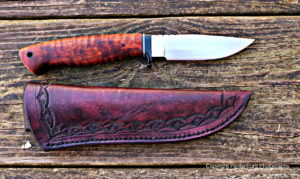
The Cross Knives Forged Hunter comes with an attractive handmade sheath.
Then reality intruded. I was solo hunting .6 mile from the road, in a heavily wooded area, and there was no one to help. I would have to gut the deer, then skin and quarter it on a blue tarp and pack out the meat. A lot of hard work was ahead.
I had enough knives. In my pack were the Forged Hunter, a Bark River Bravo 1.25 LT and my go-to Ambush Tundra. The Tundra was proven – it goes along as a backup when I’m field testing a knife. Turns out, any of the knives could do the job, but the Forged Hunter got a workout on this animal. I butchered the buck and carried it out.
After a few hours of hard work, I learned a lot about this knife.
Here are the Forged Hunter specifications:
Overall length: 9 inches
Handle: 5 inches
Blade: 4 inches
Cutting edge: 3-3/4 inches
Blade thickness: 1/8 inches
The good stuff:
Handle size: Thank you, Pete Winkler, for making a handle big enough to work with. The Forged Hunter has a 5-inch handle, which is a good size for those of us who wear size large gloves. A consideration for all hunters should be if you can use a knife while wearing gloves. I usually wear latex and/or cut resistant gloves when field dressing a large animal, unless I’m checking out the handle for slipperiness.
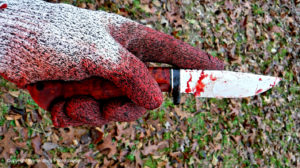
The handle is comfortable to use, even with cut resistant gloves.
Anyway, the gloves make field dressing safer and cleanup is a lot easier. The added bulk on the hands doesn’t work with some smaller knife handles. The hunter handle was completely covered with blood and other deer body fluids, and it never became dangerous to use.< The hilt is a nice touch, and it is not too big and doesn't get in the way. It's a nice amenity for a knife that will be used in bloody and slippery conditions. Steel: A2 is a user steel, and is considerably cheaper than a lot of the super steels. While my favorite steel is CPM 3V, I can’t tell a difference between it and A2 when it comes to edge retention or ease of sharpening. Part of this is my obsessive/compulsive need to sharpen knives. I always strop a blade after using it, and that means I always have a razor sharp edge.
A2 will acquire a patina after being used in blood. I like an honest patina. But if you want to keep a blade looking pristine, carry along an alcohol wipe and clean the blade as soon as it is done being used. I use Maas Metal Molish to keep blades shiny, and polished the Forged Hunter blade with Maas after the work was done.
One of my favorite hunting knives is the BR Sahara in A2 steel. I’ve used mine a lot, and there is no discoloration of the steel, thanks to the metal polish. I also tested a Damascus blade in October. Damascus is beautiful – and expensive. Only buy Damascus knives from makers or dealers you trust.
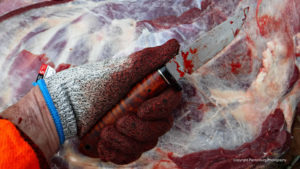
The handle is safe to use, even when bloody.
Point: My favorite point is a clip with swedge, followed closely by the drop point. This Hunter’s drop point worked well for the initial field dressing, and there was a good belly on the blade for skinning.
Grind: The blade is a full convex grind, which is my all-time favorite. A convex blade holds an edge really, really well and is still easy to resharpen.
Blade length: A 4-inch blade is about right for a hunting knife, IMHO, though I prefer a blade with about an inch more length for my personal use. This is strictly personal preference – I hunt with skilled and successful elk and deer hunters who use everything from a three-inch folder to a 10-inch Bowie.
Looks: Cross Knives are downright pretty. If you are looking for a safe queen, get a Cross Knife. But good looks and the ability to work hard can go hand-in-hand with the Forged Hunter. Mine has the curly maple handle, and it was almost too pretty to use and get all bloody. But not quite.
Made in the USA: All Cross Knives are handmade by bladesmith Pete Winkler. Pete is a “Forged in Fire” winner, and his skill and expertise in knifemaking is known throughout the industry. I have checked out several Cross Knives, and the workmanship and quality is always outstanding.< Not a dealbreaker but…
I typically split the deer’s ribcage with the knife while gutting. That way, I can see what I’m doing when eviscerating the animal, and am not working by feel. Splitting the ribcage requires some skill, strength and a damned good knife. I couldn’t split the buck’s ribcage with the Forged Hunter. I could disjoint the legs at the knees and cut off the head and quarter the carcass.
Now, the best solution is to carry a folding saw, and it can be used for all these cuts.
So do you need a Forged Hunter?
If you are serious about hunting, you need a solid, well-designed knife you can depend on. If you like safe queens, and just want to take it out and admire it sometimes, you want something pretty. In the case of the Forged Hunter, you get both.
CROSS KNIVES FORGED HUNTER VIDEO REVIEW
Please click here to check out and subscribe to the SurvivalCommonSense.com YouTube channel – thanks!

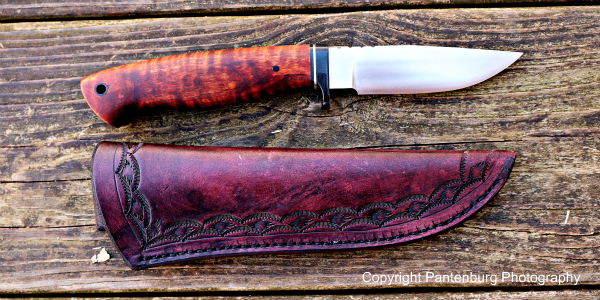
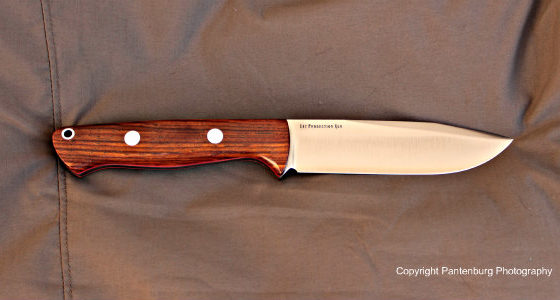
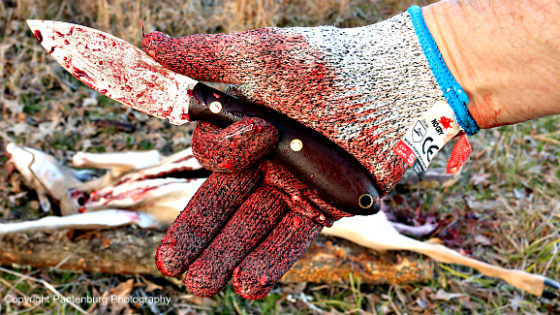
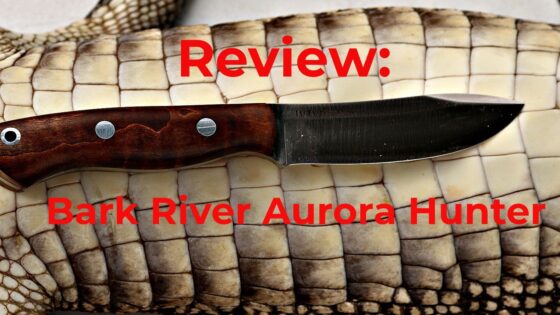
Leave a Reply